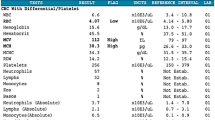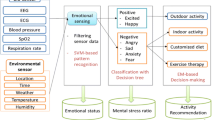Abstract
Stress may be identified by examining changes in everyone’s physiological reactions. Due to its usefulness and non-intrusive appearance, wearable devices have gained popularity in recent years. Sensors provide the possibility of continuous and real-time data gathering, which is useful for tracking one’s own stress levels. Numerous studies have shown that emotional stress has an impact on heart rate variability (HRV). Through the collection of multimodal information from the wearable sensor, our framework is able to accurately classify HRV based users’ stress levels using explainable machine learning (XML). Sometimes, ML algorithms are referred to as black boxes. XML is a model of ML that is designed to explain its objectives, decision-making, and reasoning to end users. End users may include users, data scientists, regulatory bodies, domain experts, executive board members, and managers who utilize machine learning with or without understanding or anybody whose choices are impacted by an ML model. The purpose of this work is to construct an XML-enabled, uniquely adaptable system for detecting stress in individuals. The results show promising qualitative and quantifiable visual representations that may provide the physician with more detailed knowledge from the outcomes offered by the learnt XAI models, hence improving their comprehension and decision making.











Similar content being viewed by others
Data availability
The data generated and analyzed during the current study are available from the corresponding author on reasonable request.
References
McEwen BS, Stellar E. Stress and the individual: mechanisms leading to disease. Arch Intern Med. 1993;153(18):2093–101.
Xu Q, Nwe TL, Guan C. Cluster-based analysis for personalized stress evaluation using physiological signals. IEEE J Biomed Health Inform. 2014;19(1):275–81.
Schmidt P, Reiss A, Duerichen R, Marberger C, Van Laerhoven K. Introducing wesad, a multimodal dataset for wearable stress and affect detection. In: Proceedings of the 20th ACM international conference on multimodal interaction, 2018, pp. 400–8.
Keshan N, Parimi PV, Bichindaritz I. Machine learning for stress detection from ECG signals in automobile drivers. In: 2015 IEEE International conference on big data (Big Data), IEEE, 2015, pp. 2661–9.
Gjoreski M, Luštrek M, Gams M, Gjoreski H. Monitoring stress with a wrist device using context. J Biomed Inform. 2017;73:159–70.
Shi Y, Nguyen MH, Blitz P, French B, Fisk S, De la Torre F, Kumar S. Personalized stress detection from physiological measurements. In: International Symposium on Quality of Life Technology, 2010, pp. 28–9.
Marković D, Vujičić D, Stojić D, Jovanović Ž, Pešović U, Ranđić S. Monitoring system based on iot sensor data with complex event processing and artificial neural networks for patients stress detection. In: 2019 18th International Symposium INFOTEH-JAHORINA (INFOTEH), IEEE, 2019, pp. 1–6.
Chakraborty A, Banerjee JS, Bhadra R, Dutta A, Ganguly S, Das D, Kundu S, Mahmud M, Saha G. A Framework of Intelligent Mental Health Monitoring in Smart Cities and Societies. IETE Journal of Research. (2023)(Press).
Mirsamadi S, Barsoum E, Zhang C. Automatic speech emotion recognition using recurrent neural networks with local attention. In: 2017 IEEE International Conference on Acoustics, Speech and Signal Processing (ICASSP), IEEE, pp. 2227–31.
Tzirakis P, Zhang J, Schuller BW. End-to-end speech emotion recognition using deep neural networks. In: 2018 IEEE international conference on acoustics, speech and signal processing (ICASSP), IEEE, 2018, pp. 5089–93.
Gangemi A, Presutti V, Recupero DR. Frame-based detection of opinion holders and topics: a model and a tool. IEEE Comput Intell Mag. 2014;9(1):20–30.
Smets E, Casale P, Großekathöfer U, Lamichhane B, Raedt WD, Bogaerts K, Hoof CV. Comparison of machine learning techniques for psychophysiological stress detection. In: International symposium on pervasive computing paradigms for mental health. Cham: Springer; 2015. p. 13–22.
Banerjee J, Maiti S, Chakraborty S, Dutta S, Chakraborty A, Banerjee JS. Impact of machine learning in various network security applications. In 2019 3rd International Conference on Computing Methodologies and Communication (ICCMC). IEEE, (2019). p. 276–281.
Can YS, Chalabianloo N, Ekiz D, Fernandez-Alvarez J, Riva G, Ersoy C. Personal stress-level clustering and decision-level smoothing to enhance the performance of ambulatory stress detection with smartwatches. IEEE Access. 2020;8:38146–63.
Delmastro F, Di Martino F, Dolciotti C. Cognitive training and stress detection in mci frail older people through wearable sensors and machine learning. IEEE Access. 2020;8:65573–90.
Sano A, Picard RW. Stress recognition using wearable sensors and mobile phones. In: 2013 Humaine Association Conference on Affective Computing and Intelligent Interaction, IEEE, 2013, pp. 671–6.
Sun FT, Kuo C, Cheng HT, Buthpitiya S, Collins P, Griss M. Activity-aware mental stress detection using physiological sensors. In: International conference on mobile computing, applications, and services. Cham: Springer; 2010. p. 282–301.
Airij AG, Sudirman R, Sheikh UU. GSM and GPS based real-time remote physiological signals monitoring and stress levels classification. In: 2018 2nd International Conference on BioSignal Analysis, Processing and Systems (ICBAPS), IEEE, 2018, pp. 130–5.
Indikawati FI, Winiarti S. Stress detection from multimodal wearable sensor data. IOP Conf Ser. 2020;771(1):012028.
Can YS, Chalabianloo N, Ekiz D, Ersoy C. Continuous stress detection using wearable sensors in real life: algorithmic programming contest case study. Sensors. 2019;19(8):1849.
Nkurikiyeyezu K, Yokokubo A, Lopez G. The effect of person-specific biometrics in improving generic stress predictive models. 2019. arXiv preprint arXiv:1910.01770.
Gedam S, Paul S. A review on mental stress detection using wearable sensors and machine learning techniques. IEEE Access. 2021;9:84045–66.
Adadi A, Berrada M. Peeking inside the black-box: a survey on explainable artificial intelligence (XAI). IEEE Access. 2018;6:52138–60.
Ye Q, Xia J, Yang G. Explainable AI for COVID-19 CT classifiers: an initial comparison study. In: 2021 IEEE 34th International Symposium on Computer-Based Medical Systems (CBMS), IEEE, 2021, pp. 521–6.
Wang M, Zheng K, Yang Y, Wang X. An explainable machine learning framework for intrusion detection systems. IEEE Access. 2020;8:73127–41.
Mandal JK, Misra S, Banerjee JS, Nayak S. Applications of Machine intelligence in Engineering: Proceedings of 2nd Global Conference on Artificial Intelligence and Applications (GCAIA, 2021). Jaipur, India: CRC Press; 2022. p. 8–10
Saha P, Guhathakurata S, Saha S, Chakraborty A, Banerjee JS. Application of machine learning in app-based cab booking system: a survey on Indian scenario. In Applications of Artificial Intelligence in Engineering. Singapore: Springer: 2021. p. 483–497.
Guhathakurata S, Kundu S, Chakraborty A, Banerjee JS. A novel approach to predict COVID-19 using support vector machine. In Data Science for COVID-19. Academic Press; 2021. p. 351–364.
Pandey I, Dutta HS, Banerjee JS. WBAN: a smart approach to next generation e-healthcare system. In 2019 3rd International Conference on Computing Methodologies and Communication (ICCMC). IEEE, 2019. p. 344–349
Guhathakurata S, Saha S, Kundu S, Chakraborty A, Banerjee JS. South Asian Countries are less fatal concerning COVID-19: a fact-finding procedure integrating machine learning & multiple criteria decision-making (MCDM) technique. Journal of The Institution of Engineers (India): Series B, 2021;102(6):1249–1263. https://doi.org/10.1007/s40031-021-00547-z
Guhathakurata S, Saha S, Kundu S, Chakraborty A, Banerjee JS. A new approach to predict COVID-19 using artificial neural networks. In Cyber-Physical Systems. Academic Press; 2022. pp. 139–160
Guhathakurata, S., Saha, S., Kundu, S., Chakraborty, A., & Banerjee, J. S.: South Asian countries are less fatal concerning COVID-19: a hybrid approach using machine learning and M-AHP. In Computational Intelligence Techniques for combating COVID-19 (pp. 1-26). Springer, Cham, (2021).
Costin R, Rotariu C, Pasarica A. Mental stress detection using heart rate variability and morphologic variability of EeG signals. In: 2012 International Conference and Exposition on Electrical and Power Engineering, IEEE, 2012, pp. 591–6).
Kim HG, Cheon EJ, Bai DS, Lee YH, Koo BH. Stress and heart rate variability: a meta-analysis and review of the literature. Psychiatry Investig. 2018;15(3):235.
Bin Heyat MB, Akhtar F, Abbas SJ, Al-Sarem M, Alqarafi A, Stalin A, Wu K. Wearable flexible electronics based cardiac electrode for researcher mental stress detection system using machine learning models on single lead electrocardiogram signal. Biosensors. 2022;12(6):427.
AlShorman O, Masadeh M, Heyat MBB, Akhtar F, Almahasneh H, Ashraf GM, Alexiou A. Frontal lobe real-time EEG analysis using machine learning techniques for mental stress detection. J Integr Neurosci. 2022;21(1):20.
Author information
Authors and Affiliations
Corresponding author
Ethics declarations
Conflict of Interest
On behalf of all authors, the corresponding author states that there is no conflict of interest and no funding received for this research.
Additional information
Publisher's Note
Springer Nature remains neutral with regard to jurisdictional claims in published maps and institutional affiliations.
This article is part of the topical collection “Advances in Computational Intelligence for Artificial Intelligence, Machine Learning, Internet of Things and Data Analytics” guest edited by S. Meenakshi Sundaram, Young Lee and Gururaj K S.
Rights and permissions
Springer Nature or its licensor (e.g. a society or other partner) holds exclusive rights to this article under a publishing agreement with the author(s) or other rightsholder(s); author self-archiving of the accepted manuscript version of this article is solely governed by the terms of such publishing agreement and applicable law.
About this article
Cite this article
Banerjee, J.S., Mahmud, M. & Brown, D. Heart Rate Variability-Based Mental Stress Detection: An Explainable Machine Learning Approach. SN COMPUT. SCI. 4, 176 (2023). https://doi.org/10.1007/s42979-022-01605-z
Received:
Accepted:
Published:
DOI: https://doi.org/10.1007/s42979-022-01605-z




